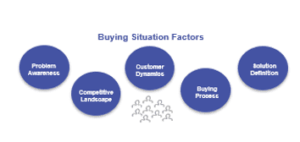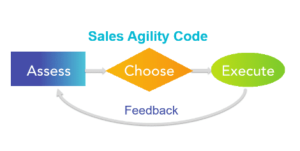The Importance of Simplicity: What Einstein Can Teach Salespeople About Simplicity
Albert Einstein, arguably one of the greatest minds of all time, had a lot to say about simplicity. At VantagePoint, we agree with him. One of his famous quotes puts everything into perspective: “if you can’t say it simply, you don’t understand it well enough.” Throughout our history, we’ve done extensive research that led us to the same conclusion as Einstein. Simplicity is on the other side of complexity, but you must get to the other side. This is the challenge with most commercially available sales enablement programs; they never get to the simplicity on the other side of complexity.
Simplicity Requires Focus: Less is More
What we’ve discovered through the years is that the most successful sales managers and salespeople narrow down their focus, their scope, and their tasks. Focus is king. Complexity is the disease and simplicity is the cure. The most successful sellers don’t do more, they do things differently. We will explore this … The most successful sellers know that they don’t need more tools, more methodologies, or more processes. They need just enough of the right ones to get the job done. We refer to this whittling down of choices as the minimal effective dose.
So, why the minimal effective dose versus the maximum dose? More is not better. That is a short-term thinking, immediate gratification response. If a little bit is good, then more is better. In his excellent post, Hank Barnes, Chief of Research, Buying Behavior – Tech and Service Provider at Gartner, proposes that we suffer from the tyranny of more. More options are being thrown at us all the time. A new CRM, a new content management system, a new virtual selling platform, a new conversation analytic tool, a new sales methodology, and on and on it goes. The thinking goes like this: “there must be some new thing that will provide my sellers with that additional edge.” Well, there is. It is called focus. Back to the minimal effective dose.
Death of the One-Size-Fits-All Sales Methodology
Most of the commercially available sales methodologies are designed to work in any situation. They are overengineered to the point of being cumbersome and clunky. Too many steps and too many tools. When a sales approach is designed to be able to work in almost any situation, it most likely works well in no situations. It is too complex. So, here’s the fly in the ointment of simplicity. The highest-performing sellers engage in four patterns of selling behavior, not one. Does that mean that you must train your salespeople on four different methodologies? Heck no, although that is the most common reaction. Let’s unpack this idea a bit and see how it ultimately ties right back to simplicity.
In groundbreaking research by the FSU Sales Institute, and further validated by VantagePoint, high performing sellers use four sales strategies in their selling efforts:

Well, that doesn’t seem very simple now does it. Not so fast. Each of these four sales strategies is comprised of three primary tactics. That means that when you consider what is needed to execute all of them, it is only 12 tactics in total. Most single sales methodologies have far more than 12 tactics, at least double that amount. So comprehensive doesn’t mean more complex. Again, it leads to a minimally effective dose. Contrast that with a maximum ineffective dose.
Understanding Buyers Doesn’t Have to be Complex Either
If we know that top-performing sellers engage in four sales strategies, not just one, then what are the implications for how sellers choose which strategy or tactics are appropriate at any given point in time? The key here is that effective sellers have a mechanism for gathering information and narrowing down their choices.
As we internalized and expanded on the excellent research conducted by the FSU Sales Institute, some additional insights emerged. When we examined the data in more detail over time, we realized that there are five primary categories of information (or factors) that define the majority of buying situations sellers face.

This important insight enabled us to take the complex world of customer buying situations and narrow that focus down to five key areas that sellers need to understand to make the best decisions about which sales strategy and tactic to use and when. Instead of exploring over 25 buying factors indiscriminately, we teach sellers to explore the five categories and determine the most important influences within each one. This goes back to simplicity over complexity. I can teach a seller to explore 25 different buying factors, or I can have them explore five. I think you will agree that five is a much more manageable number.
Keeping to the model of simplicity, high-performing sellers have a three-step process they follow to understand the buying situation they are facing, choose the best sales strategy for the task at hand, and executing that strategy effectively.

The highest-performing sellers continually monitor buyer reactions and changes in the buying situation. This monitoring enables them to assess how buyer behavior is changing and then adapt and choose the best next path to increase the likelihood of a win.
In selling, simplicity wins. Top sellers spend more time assessing and making sense of the buyer behavior and use that vital information to align their selling efforts accordingly. This simple, yet powerful approach ensures the minimal effective dose applied correctly leads to the best outcomes.
To learn more about the coaching practices of high-performing managers, check out our most recent book Crushing Quota: Proven Sales Coaching Practices for Breakthrough Performance on Amazon.
VantagePoint Performance is now part of Imparta, a global leader in performance improvement for customer-facing teams.